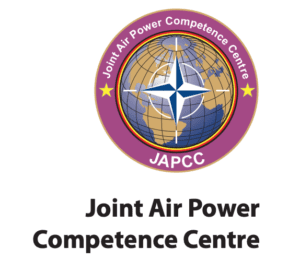 As part of the partnership between SpaceWatch.Global and Joint Air Power Competence Centre, we have been granted permission to publish selected articles and texts. We are pleased to present “State’s Right to Self-Defence in Outer Space A New Challenge for NATO’s Deterrence”, originally published in the Joint Air Power Competence Centre Journal 30.
As part of the partnership between SpaceWatch.Global and Joint Air Power Competence Centre, we have been granted permission to publish selected articles and texts. We are pleased to present “State’s Right to Self-Defence in Outer Space A New Challenge for NATO’s Deterrence”, originally published in the Joint Air Power Competence Centre Journal 30.
Dr Anne-Sophie Martin, Department of Political Sciences, Sapienza University of Rome
Introduction
NATO clearly identified outer space as the fifth military domain beside air, land, sea and cyberspace on November 2019, in response to expanding issues over protecting space assets from hostile intentions such as interference.1 As mentioned by the NATO Secretary General, Jens Stoltenberg, during a press conference in Brussels ‘this can allow NATO planners to make a request for allies to provide capabilities and services, such as satellite communications and data imagery’.2 There are about 2,000 satellites in the Earth’s orbit, at least half of them are owned and operated by NATO member States.3 Still, the Alliance does not possess its own space assets, and depends on the technologies of its members. This is a reality that space is becoming more and more important for military operations and missions. However, the Secretary General assured that NATO’s approach ‘… will remain defensive and fully in line with international law. NATO has no intention to put weapons in space. But we need to ensure our missions and operations have the right support.’4

These words illustrate the growing significance of outer space for the Alliance. Space is part of our daily life on Earth making space assets an integral part of national and international infrastructure. Moreover, space assets represent crucial elements to support military or humanitarian operations on Earth through remote sensing data, navigation, and telecommunications. Outer space can be used for peaceful purposes, but also in an aggressive way. As of now, the dependence on space assets is the reason why they are an attractive target to adversaries. Hence, space is becoming an essential tool for the Alliance’s deterrence and defence.5 It is crucial for NATO member countries that during the missions and operations they will undertake, they have the right support. Today, without satellites, modern warfare can no longer work. More and more countries are therefore developing new technologies such as Anti-Satellite (ASAT) weapons6 or cyberattacks to damage enemy satellites in case of ‘aggressive’ behaviour against space assets. Espionage should also be taken into account, just as in the case when a Russian satellite came close to the French-Italian satellite ‘Athena-Fidus’ used for military communications in October 2017.7 Another more recent example concerns a Russian inspector satellite which shifted its position in orbit to get closer to a United States (US) spy satellite.8 New space applications such as on-orbit servicing vehicles, due to their dual-use nature, might also represent a menace as they may be used in a hostile way against the space asset serviced.
The Legal Perspective of Outer Space
From a legal perspective, two substantial articles have to be stated when discussing the military use of outer space. First, Article III of the Outer Space Treaty (OST)9 stipulates that States shall carry on space activities in accordance with international law, including the Charter of the United Nations (UN). Then, Article IV paragraph 1 of the OST does not provide a complete demilitarization of outer space, but a denuclearization regime. In fact, States are unrestricted to deploy in outer space any type of military satellites and to use outer space for conventional weapons. Its paragraph 2 concerns the use of the Moon and other celestial bodies and it introduces full demilitarization of the Moon and other celestial bodies. Article IV denotes some ambiguities in the sense that it prohibits the use or placement in space of ‘nuclear weapons or any other kinds of weapons of mass destruction’ but it does not address the issue of conventional weapons. In this context, some activities carried out by States reveal the limits of Article IV such as the use of ASAT missiles10 by China, the US and more recently India.
States have the challenge to balance their commitment to international laws and the UN space treaties with protecting their space assets and interests in space activities from hostile action.
Linking Space Assets with States
In case of aggressive or hostile action against a space asset, the right of self-defence in outer space arises.11 Self-defence is a notion of international law linked to a State’s territory.12 Indeed, it refers to the right of a State to respond to armed attacks against its territory.13 In the first instance, one can argue that because outer space is an area beyond national jurisdiction, self-defence is not permitted in this environment. However, practice demonstrates that the right of self-defence is also in relation to the use of force against facilities and objects under the jurisdiction of a State, not just its physical territories.14 In this context, it is important to underscore the fact that an object launched into outer space, such as a satellite, must be registered by the launching State on an appropriate registry which it shall maintain.15 Thus, registration shapes a link between the registering State and the object registered that enables State to exercise its jurisdiction over its asset. Hence, States can legally conduct action in self-defence to respond to attacks against space objects that they have registered.16 One can highlight the fact that the right of self-defence in space is similar to the protection of vessels on the high seas or aircraft flying in international air spaces.17
Satellites can be ‘attacked’ using kinetic means, for instance ASAT, laser, microsatellites used as ‘explosive devices’, or non-kinetic means such as cyberattack, jamming, or interference. Hence, ‘attacking’ a space asset can reduce its functionality or destroy it, and it can create a strategic military advantage for the adversaries in case of conflict in outer space. These actions may represent an armed attack18 leading to the activation of the right of self-defence.
Given the crucial importance that space assets represent for military, social and economic systems, States seek to protect their assets against menaces that could damage or destroy them.19 States are placing the protection of space assets at the core of their defensive strategies and declaring their intention to act in self-defence in space if needed.20 In 2019 France presented a national space strategy with the establishment of a ‘Space Command’.21 In addition, the United States recently established the US Space Force as the sixth military branch.22
Jus Ad Bellum in Space
Nevertheless, the exercise of the right of self-defence in outer space represents a grey area of international law.23 First, States have to consider Article 2.4 of the UN Charter which prohibits the use of force in international relations. However, the UN Charter foresees two main exceptions to the prohibition on the use of force in international relations: (i) the use of force authorized by the Security Council under Chapter VII of the Charter; (ii) the individual or collective right of self-defence pursuant to Article 51 of the UN Charter. Both provisions are based on the jus ad bellum that is the circumstances under which it is lawful to employ military force.24
As mentioned, ‘jurisdiction’ over these objects is considered to correspond to ‘sovereignty’, and so the right of a State to defend objects under its sovereignty on Earth coherently extends to outer space. Thus, as long as states do not interfere in a hostile manner with the space assets of other states (thus violating of Article 2 (4) of the UN Charter) and do not station weapons of mass destruction or nuclear weapons in space, their right to act in self-defence in outer space pursuant to customary law and Article 51 of the UN Charter cannot be denied.
Some questions must be emphasized: do offensive or defensive actions in space warfare cause re-alignments to allied treaties? In other words, if a NATO Member State is attacked in space, does that automatically mean that NATO countries will come to its defence? According to Articles 5 and 6 of the North Atlantic Treaty, in case of an armed attack against one or more NATO Member States, it shall be considered as an attack against them all and consequently, the right of individual or collective self-defence shall be activated and shall assist the Party(ies). Here, it is admitted that the State jurisdiction is extended to its space assets, and in case of armed attack in space against one or several NATO Member States, the others may be able to support them.
Concluding Remarks
These issues deserve new rules and much more attention from the international community. There is an imperative need to revisit the existing framework of international laws pertaining to space and State behaviour. It is necessary to reconsider the area of intervention, as outer space is a new ‘military domain’. In June, NATO defence ministers first announced the creation of a space strategy25, intending to protect satellites that are crucial for communication, navigation, early warning systems for rocket launches, and status reports in conflict zones. The North Atlantic Alliance could implement a policy similar on what already exists in the field of cyberspace operations. Indeed, NATO outlined that a cyberattack can, under certain circumstances, be considered a reason for activating Article 5 of the North Atlantic Treaty, thus activating the principle of collective defence.26 Triggering Article 5 could be also relevant in case of future hostile act in outer space.
1. A. Brzozowski, NATO Braces for the New Space Age, Euroactiv, 21 Nov., 2019: https://www.euractiv.com/section/global-europe/news/nato-braces-for-the-new-space-age/
2. NATO’s Secretary General Jens Stoltenberg following the meeting of the North Atlantic Council as the level of Foreign Ministers, Press Conference, 20 Nov. 2019: https://www.nato.int/cps/en/natohq/opinions_171022.htm
3. Ibid.
4. Ibid.
5. Ibid.
6. See UNIDIR, Space Dossier, Towards ASAT Test Guidelines, May 2018, p. 18: https://www.unidir.org/publication/towards-asat-test-guidelines
7. Paris then accused Moscow of espionage. Florence Parly, Ministre des Armées, Espace et défense, discours, 7 Sep. 2018, p. 2: https://www.defense.gouv.fr/fre/actualites/articles/direct-florence-parly-s-exprime-sur-les-enjeux-de-l-espace-pour-la-defense. Senate, Extraordinary Session of 2018–2019, n°626, Information Report drawn up on behalf of the Foreign Affairs, Defence and Armed Forces Committee by the Working Group on European Defence, p. 90: http://www.senat.fr/rap/r18-626-2/r18-626-21.pdf
8. J. Trevithick, A Russian ‘Inspector’ Spacecraft Now Appears to Be Shadowing an American Spy Satellite, The Drive, 30 Jan. 2020: https://www.thedrive.com/the-war-zone/32031/a-russian-inspector-spacecraft-now-appears-to-be-shadowing-an-american-spy-satellite
9. Treaty on Principles Governing the Activities of States in the Exploration and Use of Outer Space, including the Moon and Other Celestial Bodies, 10 Oct. 1967, 610 U.N.T.S. 205.
10. Secure World Foundation, 2007 Chinese Anti-Satellite Test, Fact Sheet, 23 Nov. 2010: http://swfound.org/media/205391/chinese_asat_fact_sheet_updated_2012.pdf; https://thediplomat.com/2017/01/how-china-is-weaponizing-outer-space/; One year after China, on 14 Feb. 2008, the United States launched an interceptor missile to destroy a spy satellite: https://www.thespacereview.com/article/3277/1; Also India conducted an ASAT Test in Mar. 2019: https://thediplomat.com/2019/05/why-indias-asat-test-was-reckless/
11. https://swfound.org/media/205345/self-defense_space_summary_dec2015.pdf
12. F. Tronchetti, The Right of Self-Defence in Outer Space: An Appraisal, 63 ZLW (2014), p. 92 ff.
13. R. J. Lee, The jus ad bellum in outer space: the interrelationship between Article 103 of the Charter of the United Nations and Article IV of the Outer Space Treaty, 45 Proc. IISL (2002), p. 139–148.
14. Y. Dinstein, War, Aggression and Self-Defence, Cambridge Univ. Press, 4th ed. (2005); T. M. Franck, Recourse to force, State Action Against Threats and Armed Attack, Cambridge Univ. Press (2002); I. Brownlie, International Law and the Use of Force by States, Oxford, Clarendon Press (1991).
15. Article II and III of the Convention on Registration of Objects Launched into Outer Space, 12 Nov. 1975, 28 U.S.T. 695, 1023 U.N.T.S. 15; see also F. Lyall, P. B. Larsen, Space Law A Treaties, Routledge, 2018, p. 75 ff; M. J. Sundahl, Legal Status of Spacecraft, in R. S. Jakhu, P. S. Dempsey, Routledge Handbook of Space Law, Routledge, 2017, p. 42–44.
16. B. A. Hurwitz, The legality of space militarization, Elsevier Science Ltd (1986), p. 252; C. M. Petras, The use of force in response to cyber-attack on commercial space systems – Reexamining self-defence in outer space in light of the convergence of US military and commercial space activities, Journal of Air Law and Commerce, Volume 67, Issue 4 (2002), p. 1213–1256.
17. Ibid. 12.
18. B. L. Hart, Anti-satellite weapons: threats, laws and the uncertain future of space, Annals of Air & Sp. L., Volume 33 (2008), p. 358.
19. As declared by the ICJ in the Oil Platform case, measures of self-defence are necessary to protect the essential security interests of a state. Oil Platforms case (Islamic Republic of Iran v. United States of America), 2003, ICJ Rep No. 161, para. 51.
20. See A. Brzozowski, Budget Battle Hampers EU in Space, Euroactiv, 22. Jan. 2020: https://www.euractiv.com/section/defence-and-security/news/budget-battle-hampers-eu-in-space/; National Security Space Strategy of the United States of America, Unclassified Summary, 2011; China’s White Paper on National Defense in the New Era, Jul. 2019: http://www.xinhuanet.com/english/2019-07/24/c_138253389.htm (last accessed 28 Jul. 2020); C. M. Petras, Eyes on freedom – A view of the law governing military use of satellite reconnaissance in US homeland defense, J. Sp. L., Volume 31 (2005), p. 81–115.
21. H. Weitering, France is launching a space ‘space force’ with weaponized satellites, 2 Aug. 2019: https://www.space.com/france-military-space-force.html; S. Morgan, Macron announces launch of French Space Force, Euroactiv, 15 Jul. 2019: https://www.euractiv.com/section/aerospace-and-defence/news/mon-ready-macron-announces-launch-of-french-space-force/; Permanent representation of France to the Conference on Disarmament, Florence Parly unveils the French space defence strategy, 25 Jul. 2019: https://cd-geneve.delegfrance.org/Florence-Parly-unveils-the-French-space-defence-strategy; see also Air&Cosmos, Défense spatiale: la France intègre les opérations spatiales interalliées, 2 Feb. 2020: https://www.air-cosmos.com/article/dfense-spatiale-la-france-intgre-les-oprations-spatiales-interallies-22567
22. US Space Force, Official website: https://www.spaceforce.mil/; see also Space Policy Directive-4, Establishment of the United States Space Force, 19 Feb. 2019: https://www.whitehouse.gov/presidential-actions/text-space-policy-directive-4-establishment-united-states-space-force/; AirForceTimes, The Space Force is officially the sixth military branch, 20 Dec. 2019: https://www.airforcetimes.com/news/your-military/2019/12/21/the-space-force-is-officially-the-sixth-military-branch-heres-what-that-means/
23. Ibid. 12.
24. S. A. Alexandrov, Self-Defense Against the Use of Force in International Law, The Hague, Martinus Nijhoff, 1996; O. Schachter, International Law: The Right of States to Use Armed Force, Michigan L Rev., Volume 82 (1984), p. 1620; T. Franck, Recourse to Force: State Action Against Threats and Armed Attacks, Cambridge, Cambridge University Press, 2002.
25. https://moderndiplomacy.eu/2019/08/03/natos-space-strategy-what-is-it-all-about/
26. https://www.nato.int/cps/en/natohq/topics_78170.htm: Cyber defence is part of NATO’s core task of collective defence. Computer networks, infrastructure and software were designated as a separate area for developing the tactics and strategy of combat operations on land, on high seas and in the air; Fact Sheet, NATO Cyber Defence, Feb. 2019: https://www.nato.int/nato_static_fl2014/assets/pdf/pdf_2019_02/20190208_1902-factsheet-cyber-defence-en.pdf

Dr Anne-Sophie Martin
is a Doctor of Law specializing in International Law and Space Law at Sapienza University of Rome (Italy). Her doctoral research focused on the legal aspects of dual-use satellites. She is a member of several internationally recognized institutions in the field of space law and policy; and author of diverse publications.
The original version of JAPCC Journal 30, Space Situational Awareness Together We Stand, Divided We Fall, can be downloaded here JAPCC_J30.





